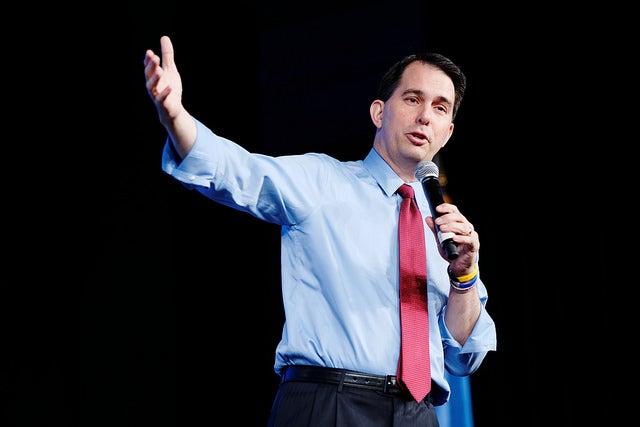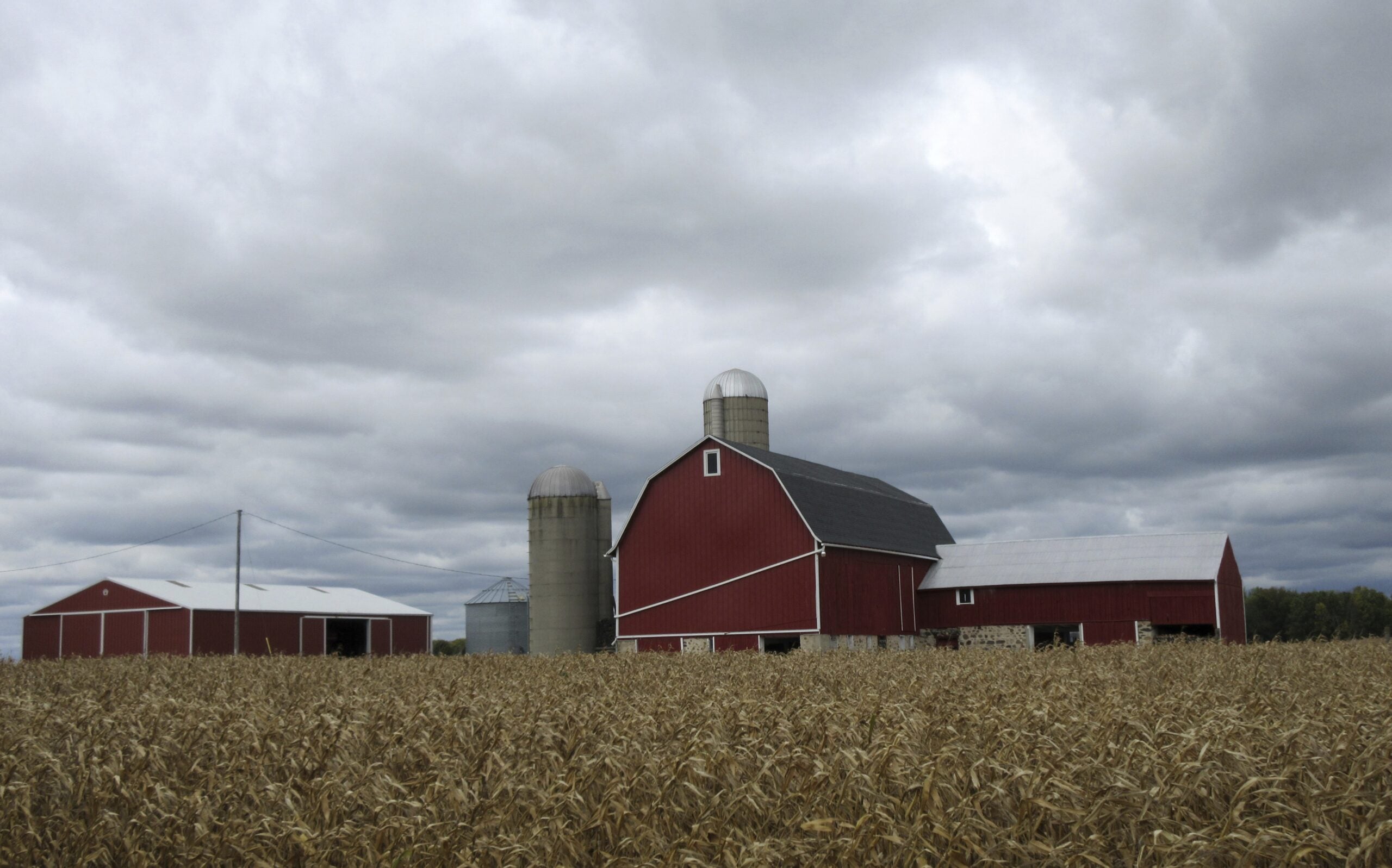As Gov. Scott Walker lays the foundation for his presidential campaign, he’s portraying Wisconsin as an economic success story that the nation could emulate. To tell that story, he’s talking a lot about certain numbers, while ignoring other metrics — among them a report due out this week that economists call the “gold standard” of jobs numbers.
Every governor puts their own spin on jobs numbers. Today, it’s Scott Walker, but almost two decades ago, it was Tommy Thompson. During his 1996 State of the State Address, Thompson touted the state’s unemployment rates as a 29-year-old Walker listened on.
“The last time our jobless rate was so low, a gallon of gas cost 35 cents, Neil Armstrong had just walked on the moon, and state Representative Scott Walker was in his terrible twos,” Thompson said.
Stay informed on the latest news
Sign up for WPR’s email newsletter.
When it came to jobs, a lot went right for Thompson. During a stretch in the late 1980s, Wisconsin employers added roughly 250,000 jobs. Walker used that as the basis for his now-famous 2010 pledge to help Wisconsin create 250,000 jobs in his first term.
“I want every cabinet secretary to have branded across their head, ‘250,000 jobs,’” said Walker at a December 2010 meeting of the Dairy Business Association.
The numbers from the next Quarterly Census of Employment and Wages, which will be released on Wednesday, will close the book on Walker’s promise. Barring a major surprise, they’ll show Walker only made it only about halfway toward his pledge.
These days, Walker won’t talk about the promise unless he’s asked about it. He’s more apt to talk about Wisconsin’s economy using two other metrics, as he did recently at a ground-breaking in Portage.
One of those metrics is the state’s unemployment rate.
“December of 2010, the month before we took office, the unemployment rate was 8.1 percent. Just this last month we saw it go down to 4.4 percent,” he said.
The Bureau of Labor Statistics calculates the unemployment rate using data from a monthly survey of households. University of Michigan Labor Economist Don Grimes said it’s an important metric because it lets people know whether there are a lot of workers looking for a job or just a few.
“The really good news for Wisconsin is that you guys are actually at full employment,” said Grimes.
In addition to the unemployment rate, Walker has lately turned his focus to the labor force participation rate.
“We still have a labor participation rate at 68 percent, which again is one of the tops in the country, which is a good sign,” he said at the Portage groundbreaking.
The labor participation rate is a measure of the total workforce — everyone who either has a job or wants one — as a percentage of the state’s population. Anyone not looking for work, like retirees and full-time students, does not get counted. For the labor participation rate, higher is better, and Marquette University’s Charles Franklin says Wisconsin’s rate is about 5 percentage points higher than the nation’s.
“That reflects the fact that more people are actively either in jobs or seeking jobs in Wisconsin compared to the percentage nationwide. So that’s the good news,” said Franklin.
What Walker does not mention is that Wisconsin’s labor force rate did not get better under his watch. It was 69 percent before he was governor, but is 68 percent today.
“Well, the structure of Wisconsin’s economy he obviously inherited. I mean, the labor force participation rate was high before he became governor,” said Grimes.
Similarly, Grimes said that while Wisconsin’s unemployment rate is good news, it’s effectively back to pre-recession levels.
If significantly more people got jobs under Walker’s watch, Franklin say that would be clear in the detailed numbers coming out on Wednesday.
“There’s no question the quarterly numbers are the best numbers — the gold standard,” he said.
So far, those numbers have shown a consistent trend during Walker’s tenure as governor: Wisconsin has added jobs slower than its Midwest neighbors and slower than the nation as a whole.
Wisconsin Public Radio, © Copyright 2025, Board of Regents of the University of Wisconsin System and Wisconsin Educational Communications Board.







